|
News Headlines Digest
Period Ending Wednesday June 30 2010
“Lasers used to map giant burial mounds in 3-D”
The Japan Times (Japan)
“Looters stealing from Iraq’s unprotected archeological sites”
The Plain Dealer (USA)
“Authorities struggle to contain treasure hunters”
Saudi Gazette (Saudi Arabia)
“Archaeologists try to determine shipwreck’s origin”
Florida AP (USA)
“Macedonian police seize large quantity of ill-gotten antiquities”
XinhuaNet (China)
“Tamil Brahmi inscription found in Tissamaharama”
TamilNet (Sri Lanka)
“4,000-year-old necklace found in dumpster”
Irish Central (USA)
“King Tutankhamun died from sickle-cell disease, not malaria: Experts”
Daily News & Analysis (India)
“Council worker stumbles across 3,000-year-old carving”
The South Yorkshire Star (England)
“Serbian site may have hosted first copper makers”
Science News (USA)
“An archaeological site in southeastern Europe has shown its metal. This ancient settlement contains the oldest securely dated evidence of copper making, from 7,000 years ago, and suggests that copper smelting may been invented in separate parts of Asia and Europe at that time rather than spreading from a single source.
The find extends the known record of copper smelting by about 500 years, an archaeological team headed by Miljana Radivojevic’ and Thilo Rehren of University College London reports in an upcoming Journal of Archaeological Science.
The pair were joined by Serbian researchers, led by Dušan Šljivar of the National Museum Belgrade, and German scientists directed by Ernst Pernicka of the University of Tübingen.”
“Ancient voyager’s tomb found in E China”
People’s Daily (China)
“Excavations link ancient prison to apostle’s last days”
Canada.com (Canada)
“Archaeologists make ‘spectacular’ discovery at Delancey”
BBC News (UK)
“King Tut died of blood disorder: German researchers”
AFP / Yahoo News (France)
“Artifacts dating back to 5000 B.C. found in Rutland Town”
Rutland Herald (USA)
“Well-preserved Roman road found in southern Serbia”
M & C News (Scotland)
“Archaeologists uncover Harald Bluetooth’s royal palace”
Copenhagen Post (Denmark)
“Ancient buildings found on Norman fortress site”
Wales Online / Western Mail (Cymru)
“Archaeological excavations begin in ancient city of Rhodiapolis”
Hurriyet Daily News (Turkey)
“Roman fort found in Cornwall ‘rewrites history'”
BBC News (UK)
“Alamut yields ancient water reservoirs”
Press TV (Iran)
“Recent archeological excavations at Iran’s Alamut fortress have yielded food storage rooms and water reservoirs in the northwestern historical site. Archeologists found a number of storage rooms on the west side of the fortress, which show that residents of the site made good use of their rocky habitation.
A sandstone rock representing four gazelles
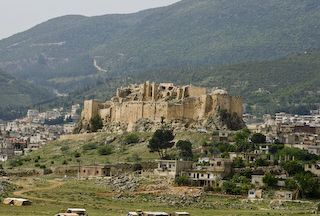
Press TV, Iran
According to Head of the Alamut Research Center Hamideh Choubak, a number of stairs were also found which experts believe were used to reach the food storage.
‘The site’s largest water reservoir is 11.45m long, 4m wide and about 4m deep’, she explained saying that the residents collected rain and snow water in big cisterns and used it during summer.”
“12th-century dike discovered in Nakdong River”
Yonhap News Agency (South Korea)
“Bulgarian Archaeologists Hope to Find Constantine’s Palace”
Novinite (Bulgaria)
“Fungi, Feces Show Comet Didn’t Kill Ice Age Mammals?”
National Geographic News (USA)
“Dionysian ecstatic cults in early Rome”
AlphaGalileo / University of Gothenburg (Belgium)
“History of Peru series part: the dawn of urbanization”
Peruvian Times (Peru)
“Unique archaeological discovery in Adjara”
The Georgian Times (Georgia)
“Archaeologists seek protection for Afghan treasures”
AFP (France)
“An Underwater Treasure”
Beijing Review (China)
“Digs in Cyprus uncover more of Phoenician fort”
The Associated Press (USA)
“Two Birch Bark Manuscripts Found by Schoolgirl”
Russia-Info Centre (Russia)
“Diggers find highly desirable 12th century house”
News Wales (Cymru)
“The Phoenician archaeology – a common Euro-Mediterranean heritage”
Global Arab Network (Syria)
A sandstone rock representing four gazelles
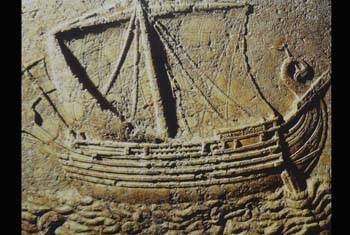
Global Arab Network, Syria
“Archaeological excavations of the city of Tigranakert in Artsakh get under way”
Panorama (Armenia)
“3,500-year-old underground town found in Egypt”
The Times of India (India)
“Stolen coffin returns”
Global Times (China)
“How The Ancients Celebrated The Solstice”
WITN News (USA)
“Next stop France for oldest baby mammoth”
AFP (France)
“Chester ‘dig’ reveals remains of Cholmondeley Mansion house”
Chester First (England)
“Scientists announce discovery of 3.6 million-year-old relative of ‘Lucy'”
EurekAlert (USA)
“BGU scientists sheds light on ancient Egypt”
The Jerusalem Post (Israel)
“Excavation at Iron Age hill fort near Melton Mowbray”
BBC News (UK)
“Archaeologists discover ‘museum under the sea’ at Gallipoli”
The Daily Telegraph (Australia)
“Radar reveals extent of buried ancient Egypt city”
The Associated Press (USA)
News Headlines Digest
Week Ending Sunday June 20 2010
“Cyprus dig reveals ancient palace”
Famagusta Gazette (Cyprus)
“US archeologists find ruins of four ancient castles in Turkey”
Turkish Press (Turkey)
“Roman dwelling find at Jersey church ‘a first'”
BBC News (UK)
“Ancient site suggests meat diet”
Asahi Shimbun (Japan)
“Paying nightly homage to Horus”
Al-Ahram Weekly (Egypt)
“Ancient climate change ‘link’ to CO2”
BBC Science News (UK)
“Rice archaeological remains and the possibility of DNA archaeology – .pdf”
SpringerLink (The Netherlands)
“Ancient Humans May Have Dined on Hyenas”
Discovery News (USA)
“Mount in Southern Bulgaria might hold Thracian king Seuthes residence”
Focus Information Agency (Bulgaria)
“Neolithic finds unearthed by Ormesby St Michael dig”
BBC News (UK)
“Archaeologists Discover Early Neolithic Grave in North-Western Bulgaria”
Balkan Travellers (Bulgaria)
“US returns 7 stolen ancient Cambodian sculptures”
The Asociated Press (USA)
“A new look at prehistory”
Al-Ahram Weekly (Egypt)
“Among Zahi Hawass’s ambitious plans to introduce specialised museums across the country is a proposed predynastic museum at Qena.
Anyone interested in the antecedents of the Egyptian civilisation and the cultures that predated the unification of the country under one king may soon have many of their questions answered.
A sandstone rock representing four gazelles
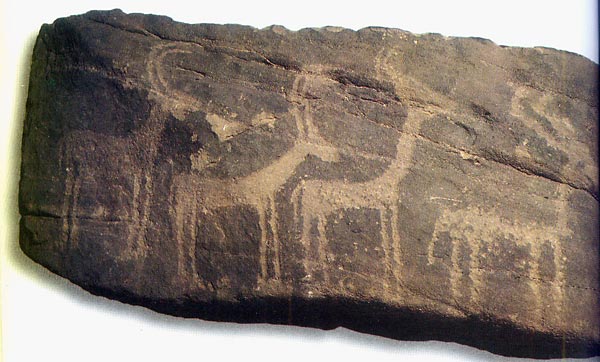
Al-Ahram Weekly, Egypt
Items showing evidence of the activities of the early peoples of the Nile Valley, from the predynastic cultures of Upper and Lower Egypt, Fayoum and the oases of Siwa and Kharga selected from storehouses around the country, plus pieces from various museums, will soon be on display in a new predynastic museum at Qena.
The museum is currently being built at an ideal location — a prominent five-feddan site overlooking the Nile. Mahmoud Mabrouk, head of the museums sector of the Supreme Council of Antiquities (SCA), which is overseeing the work, says it will represent a long period of history covering about 10,000 years.”
“Remains of first king of England’s sister found in German cathedral”
The Guardian (UK)
“Zap of UV light may have triggered life”
ABC Science News (Australia)
“Skulls show New World was settled twice: study”
Yahoo News / AFP (USA)
“Seitas, sacred places of the indigenous Sámi people, have become subjects of renewed interest”
Helsingin Sanomat (Finland)
“Airport Scanners Take on Mummies”
Discovery News (USA)
“3000-Year-Old Archaeological Lion Statue Bears Witness to Human Civilization”
Global Arab Network (Syria)
“Call for full excavation of HMS Victory shipwreck”
BBC News (UK)
“Extinction event a real blast”
ABC Science News (Australia)
“Ancient Chamorro Burial Pit Found In Agat Left Undisturbed”
Pacific News Center (Guam)
“Radiocarbon dating verifies ancient Egypt’s history”
BBC News (UK)
“Experts have used scientific dating techniques to verify the historical chronology of ancient Egypt. Radiocarbon dating was used to show that the chronology of Egypt’s Old, Middle and New Kingdoms is indeed accurate.
Some of the items, among them seeds and papyrus,
were more than 4,000 years old
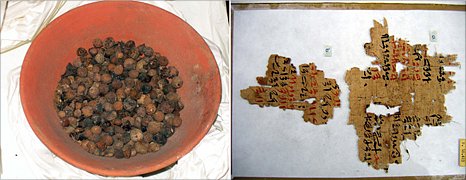
BBC News
The researchers dated seeds found in pharaohs’ tombs, including some from the tomb of the King Tutankhamun. They write in the journal Science that some of the samples are more than 4,500 years old.
Radiocarbon dating of ancient Egyptian objects is nothing new. But this time, the scientists say, they were able to use a very precise statistical technique to actually verify the Egyptian history. ”
“Conserving the living laboratory of Acre”
Israel 21C (Israel)
“The Thunderstone Mystery: What’s a Stone Age Axe Doing in an Iron Age Tomb?”
Science Daily (USA)
“American archaeologists find ruins of four ancient castles in western Turkey”
Today’s Zaman (Turkey)
“New relics found on ancient sunk ship”
XinhuaNet (China)
“Photos: Human Sacrifices Found at Ancient China Complex”
National Gepgraphic News (USA)
“Mystery of million mummies buried near Snefu’s Seila pyramid”
Sify News (India)
“Old workings at Arrowtown unearthed”
NZ Resources (New Zealand)
“Prehistoric mammal hair found in Cretaceous amber”
BBC News (UK)
“Chinese Ancient Earthenware Found in Dieng”
Viva News (Indonesia)
“A student from the Department of Archaeology of Gadjah Mada University, Yogyakarta, discovered ancient items in the Dieng Temple complex situated between Banjarnegara and Wonosobo, Central Java.
The items found during a research conducted on June 2-11, 2010, are considered earthenware produced by Chinese Dinasty of Tang around 9th century and Persian broken glasses.”
Ancient Chinese earthenware found in Central Java
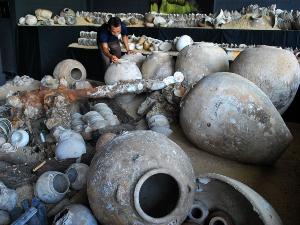
VIVAnews / Nurcholis Anhari Lubis
“Keene artifacts: History gets rewritten”
Union-Leader (USA)
“Asteroid fragment fascinates scientists”
New Zealand Herald (New Zealand)
“Ottoman-era Archaeological Dig in Jaffa Vandalized”
JTW (Turkey)
“Climate Change, Mountain Building Led To Mammal Diversity Patterns”
Daily Independent (Nigeria)
“Prehistoric Europeans Hunted, Ate Lion?”
National Geographic News (USA)
“Ruins of ancient city found in east China”
China.org (China)
“The red plains of Mars were once covered by a vast ocean… “
The Daily Mail (UK)
“New Finds Shed Light On Ancient Trade Ties”
Jakarta Globe (Indonesia)
News Headlines Digest
Week Ending Sunday June 13 2010
“Excavation of Cao Cao’s tomb throws up new mysteries”
China.org (China)
“Ancient cave paintings found in Romania”
Expatica (France)
“Confiscated relics submitted to ICHTO”
Press TV (Iran)
“Company believes its Nazca plane was hijacked by drug traffickers”
Peruvian Times (Peru)
“‘Buddha remains’ unveiled in east China temple”
XinhuaNet (China)
“French Archaeologists unearthed mosaic, pillars and inscriptions in Syria”
Global Arab Network (Syria)
“The Archaeological French expedition has unearthed a number of important archaeological mosaic floors, pillars and inscriptions at the famous archaeological city of al-Andareen, 80 kms to the north east of Hama
Excavations at al-Andareen in central Syria
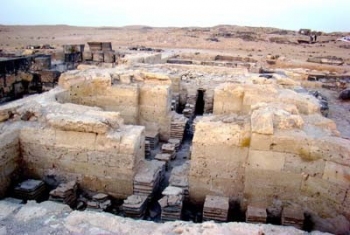
Global Arab Network, Syria
Director of Hama Antiquities Department Jamal Ramadan said ‘More than 1,000 archaeological sites have been discovered by the French expedition. The studies conducted on the unearthed clay pieces and the inscriptions showed that the sites date back to the Byzantine Era.’
He added that the expedition have unearthed a number of archaeological mosaic floors, pillars and inscriptions in the village of Tal Abdul-Aziz, adding that the Hama Antiquities Department will take all the required measures to preserve the finds due to their cultural and historical significance.”
“Oldest shoe in the world found in Armenian cave”
PanArmenian.Net (Armenia)
“Fossils Reveal that Maya People Knew about Prehistory”
Art Daily (USA)
“Treasure hunters arrested”
Daily Mirror (Sri Lanka)
“Warlord’s tomb voted a top find”
Global Times (China)
“Mithraic Mysteries and the Cult of Empire”
The New American (USA)
“Mystery of Cao Cao tomb to be unveiled on live TV”
AsiaOne (Hong Kong)
“Native site on Patuxent could date to 1000 BC”
The Baltimore Sun (USA)
“When they first detected traces of an 800-year-old wigwam on a bluff over the Patuxent River last year, archaeologists celebrated what they said was the oldest human structure yet found in Maryland.
Now, deeper excavation at the site – the front lawn of a modest rental house – is yielding details of much earlier settlement, extending its history back to at least 3,000 years ago.”
“Archaeologists confirm Megalithic find”
The Hindu (India)
“Man arrested for possessing Byzantine antiques”
Ma’an News Agency (Palestinian Territories)
“Researchers find world’s oldest leather shoe and more”
EurekAlert (USA)
“Machu Picchu artifacts held by Yale belongs to Peru, says US Senator”
Living in Peru (Peru)
“Archaeologists unearthed 99 Greco-roman artefacts in Egypt”
Global Arab Network (Syria)
“A 12,000-year-old find in Keene”
Union-Leader (USA)
“Ancient figurine ‘factory’ uncovered”
Cyprus Mail (Cyprus)
“Underwater Ruins Give Glimpse of Cleopatra”
ABC News (USA)
“Deep beneath the Mediterranean Sea in Egypt’s ancient capital Alexandria lies a wealth of archaeological artifacts. It’s a treasure trove of 20,000 objects and counting, thousands of years old providing archaeologists the key to unlocking the mystery of ancient Egypt and its rulers.
One of them is the last Queen of Egypt, Cleopatra. Legend has it that when the Romans entered Egypt in 30 BC and after losing the Battle of Actium, Cleopatra and her lover Mark Anthony took their own lives in order to avoid being captured by their enemies.
The Romans scattered their belongings and their tomb has never been found. Archaeologists however have isolated three sites in Alexandria where they believe the tomb is located.”
“Relics stolen from graveyard still untraced”
The News International (Pakistan)
“Exhibit sheds new light on Cleopatra”
Otago Daily Times (New Zealand)
“First Direct Evidence of Chalcolithic Footwear from the Near Eastern Highlands”
PloS ONE (USA)
“Archaeologists Discover 13-Century Gold Coins in Veliko Tarnovo, Bulgaria”
Balkan Travellers (Bulgaria)
“Crocodile and Hippopotamus Served as ‘Brain Food’ for Early Human Ancestors”
Science Daily (USA)
“Ebla Kingdom – Greatest Archaeological Discovery in Middle East”
Global Arab Network (Syria)
“Researchers may know identity of ancient town in Xinjiang”
People’s Daily (China)
“New evidence that first humans walked upright ‘because it was so hot'”
Mail Online (UK)
“‘3000-year-old’ paddies to be tested for date”
VietNamNet Bridge (Viet Nam)
“The Asian Stonehenge: The Mysterious Plain of Jars”
WierdAsia News (Hong Kong)
“An ancient mystery unfolds scattered across Laos’s Xieng Khouang plain. Known as the Plain of Jars, this bizarre archaeological collection of thousands of giant stone jars made from sandstone, granite and calcified coral is often referred to as an ‘Asian version of Stonehenge.’
Giant stone jars made from sandstone on the Plain of Jars, Laos
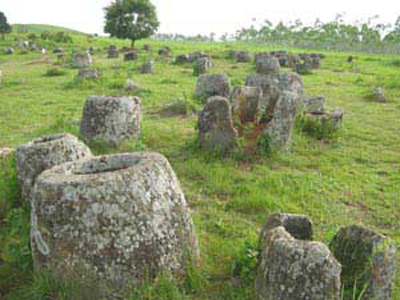
WierdAsia News
A source of fascination for archeologists and scientists since its discovery back in the late 1920s, these jars, which weigh up to 13 tons each and are between 1 and 3 meters high (about 31/2 feet to more than 10 feet), were made more than two centuries ago, but their true purpose remains shrouded in myth and mystery.
French archaeologist, Madeleine Colani, who was the person to ever explore the Plain of Jars, believed these megaliths were created by a civilization long passed into the mists of time and that they were used to store cremated remains and placed in a precise pattern that follows an ancient trade route.”
“Ancient bees found in Israel hailed from Turkey”
Los Angeles Times (USA)
“Turkmen capital is 8 thousand years old, archeologists say”
Internet-Newspaper (Turkmenistan)
“Rain uncovers ancient cemetery in Nicaragua”
IOL (South Africa)
“As of today there are 1133 known Potentially Hazardous Earth-Crossing Asteroids”
SpaceWeather.com (USA)
“Belgian archaeologists unearthed clay pieces and bathtubs in Syria”
Global Arab Network (Syria)
“Archaeologists given the rune around”
The Copenhagen Post (Denmark)
“Ancient Beehives Yield 3,000-Year-Old Bees”
Wired Science (USA)
“58,000-year-old glue and paint factory found in Africa”
Sify News (India)
“Archaeologists uncover bodies of 80 gladiators in York area”
Gulf News (Qatar)
“The Curse of the Ancients”
Biscayne Times (USA)
“Remains of another ancient varsity found”
The Times of India (India)
“As the Sun Awakens, NASA Keeps a Wary Eye on Space Weather”
NASA Science News (USA)
“Earth and space are about to come into contact in a way that’s new to human history. To make preparations, authorities in Washington DC are holding a meeting: The Space Weather Enterprise Forum at the National Press Club on June 8th.
Richard Fisher, head of NASA’s Heliophysics Division, explains what it’s all about:
‘The sun is waking up from a deep slumber, and in the next few years we expect to see much higher levels of solar activity. At the same time, our technological society has developed an unprecedented sensitivity to solar storms. The intersection of these two issues is what we’re getting together to discuss.’.
The National Academy of Sciences framed the problem two years ago in a landmark report entitled “Severe Space Weather Events—Societal and Economic Impacts.” It noted how people of the 21st-century rely on high-tech systems for the basics of daily life. Smart power grids, GPS navigation, air travel, financial services and emergency radio communications can all be knocked out by intense solar activity.
A century-class solar storm, the Academy warned, could cause twenty times more economic damage than Hurricane Katrina.”
“Archaeological Museum Display’s Eretria’s Ancient Treasures”
Balkan Travellers (Bulgaria)
“Mummified Dinosaur Emerges from ‘Stone Tomb'”
Discovery News (USA)
“Ancient pagan vessels found intact in Israel”
AFP (France)
“The ancient meteorite cult of Estonia”
io9 (UK)
“Western countries must return Indian antiquities”
Organiser (India)
“World’s best-preserved gladiatorial relics are discovered in the suburbs of York”
The Independent (UK)
News Headlines Digest
Week Ending Sunday June 06 2010
“Yangtze River’s Ancient Origins Revealed”
Science Daily (USA)
“240 archaeological sites discovered in north-eastern Syria”
Global Arab Network (Syria)
“Cavemen were in Kent earlier than experts thought”
Kent News (England)
“Corolla shipwreck may be North Carolina’s oldest”
News Observer (USA)
“Salman-e Farsi Dam flooding 2200 years of Iranian history”
Tehran Times (Iran)
“Ancient oceans belched stagnant CO2 into the skies”
New Scientist (UK)
“Dig days with Zahi Hawass: Again: one to one”
Al-Ahram Weekly (Egypt)
“British archaeologists fight with Italian farmer to save ancient aqueduct”
The Daily Telegraph (UK)
“Bring back our priceless heritage”
The Times of India (India)
“Archaeology Excavations at Sexaginta Prista Fortress Expand”
Balkan Travellers (Bulgaria)
“Building found during Rochester Cathedral excavation”
BBC News (UK)
“Lord mayor of Memphis”
Al-Ahram Weekly (Egypt)
“A colossus of an ancient Egyptian deity in Luxor, an Umayyad coin in Wadi Al-Natroun and the tomb of a 19th-Dynasty mayor of Memphis at Saqqara are the most recent discoveries in Egypt.
At the end of the winter archaeological season the announcement of new discoveries are helping specialists to decipher more chapters in Egypt’s ancient history. The most recent discoveries were carried out by Egyptian missions from the Supreme Council of Antiquities (SCA) and Cairo University in Luxor, Wadi Al-Natroun and Saqqara.
On Luxor’s west bank, at the northwestern side of the temple of Pharaoh Amenhotep III of the 19th Dynasty, an SCA mission discovered what is believed to be a colossus of the ancient Egyptian deity of wisdom, Djehuty. This large rose granite colossus measures 3.5 metres in height and 140 centimetres in width.
Zahi Hawass, secretary-general of the SCA, says the site where the statue was unearthed suggests that it could have been on an avenue of Djehuty’s that once lined the path leading northwards to the temple. Hawass pointed out that last year similar five-metre tall colossi were found at the same place and he expects still more colossi to be found.
The date of the statue cannot be verified until the excavations are completed as further objects that can be dated more specifically might be discovered.
“2,300-Year Old Etruscan Villa Found Near Grosseto in Tuscany”
Heritage Key (UK)
“9,000 year old beer recreated”
The Toronto Star (Canada)
“The Perniciously Persistent Myths of Hypatia and the Great Library”
First Things (USA)
“30 Archeological Sites in Narmada Valley Shifted”
Outlook India (India)
“Prehistoric burial mounds found in Forest”
Salisbury Journal (England)
“BYU archaeologists discover ancient royal tomb in Mexico that may be oldest in Americas”
Deseret News (USA)
“Ancient prayer book returned to Ethiopia”
AFP (France)
“Bulgarian museum to display winged solar disc in exhibition of new Thracian findings”
Focus Information Agency (Bulgaria)
“5 seized pre-Columbian artifacts returned to Peru”
Miami Herald (USA)
“Jilin highlights ancient Shaman culture”
Shanghai Daily (China)
“17th century BC grave excavated in Chitral village”
The News International (Pakistan)
“The cave of bones: A story of solenodon survival”
BBC News (UK)
“Tools show ancient human diet”
Science Alert (Australia)
“Stone Age Color, Glue ‘Factory’ Found”
Discovery News (USA)
“A once-thriving 58,000-year-old ochre powder production site has just been discovered in South Africa. The discovery offers a glimpse of what early humans valued and used in their everyday lives.
The finding, which will be described in the Journal of Archaeological Science, also marks the first time that any Stone Age site has yielded evidence for ochre powder processing on cemented hearths — an innovation for the period.
A clever caveman must have figured out that white ash from hearths can cement and become rock hard, providing a sturdy work surface.
‘Ochre occurs in a range of colors that includes orange, red, yellow, brown and shades of these colors’, project leader Lyn Wadley told Discovery News. ‘Yellow and brown ochre can be transformed to red by heating them at temperatures as low as 250 degrees Celsius.’
Ochre is derived from naturally tinted clay that contains mineral oxides. In addition to coloring objects, it makes a compound adhesive when mixed with other ingredients, such as plant gum and animal fat.”
“Maya man: No future for archaeology without ethics”
New Scientist (UK)
“Determining the Age of Saraswat Community”
Mangalorean (India)
“Neanderthal man was living in Britain 40,000 years earlier than thought”
The Daily Telegraph (UK)
“China has 870,000 intangible heritage items”
XinhuaNet (China)
“Florentine Codex, Great Intellectual Enterprise of 16th Century”
Art Daily (USA)
“Inscriptions on stone and wood”
Frontline (India)
“Flint findings in Kent reveal new era of prehistory”
The Independent (UK)
“32 cultural relics discovered in South China Sea”
XinhuaNet (China)
“Seafood diet behind big brains”
The Times of India (India)
“Our love of seafood goes way back. Archaeologists have found crocodiles, turtles and fish were eaten by early humans almost 2 million years ago.
According to the study’s researchers, this is the oldest evidence for a diet containing aquatic animals. And the nutrients they provided could have fuelled the evolution of our large human brains, the boffins added.
‘These aquatic foods are really important sources of the long-chain polyunsaturated fatty acids and docosahexaenoic acid that are so critical to human brain growth’, said co-author and paleoanthropologist Dr. Richmond.
‘Finding these foods in the diets of our early ancestors suggests they may have helped to lift constraints on brain size and fuel the evolution of a larger brain.’.
The discovery of such a diverse animal diet is important because early human brain size increased dramatically after two million years ago. ”
“Mesolithic axe head unearthed at Culmore”
Derry Journal (Northern Ireland)
“The rise and fall of a Harappan city”
Frontline (India)
“Early American colonists ‘were hit by severe drought'”
BBC News (UK)
“Turkish-Syrian archaeologists seek more collaboration”
Hurriyet Daily News (Turkey)
“Prehistoric plants linked to changes”
The Scotsman (Scotland)
“Stone and bone: Archaeologist publishes first complete look at technology of Clovis culture”
San Marcos Daily Record (USA)
“India to join global campaign to retrieve captured heritage treasures”
Sify News (India)
“Aboriginal rock art may be 40,000 years old”
The Times (UK)
“Ancient skeleton named”
BuaNews Online (South Africa)
“The Antikythera Mechanism Research Project”
Cardiff/Athens Universites (Cymru/Greece)
[In October 1900, Captain Dimitrious Kondos was leading a team of sponge divers near the the island of Antikythera off the coast of Greece. They noticed a shipwreck about 180 feet below the surface and began to investigate. Amongst the artifacts that they brought up was a coral-encrusted piece of metal that later archaeologists found was some sort of gear wheel.
The rest of the artifacts, along with the shape of the boat, suggested a date around 2000 years ago, which made the find one of the most anomalous that had ever been recovered from the Greek seas. It became known as The Antikythera Mechanism.
In 2006 the journal “Nature” published a letter, and another paper about the mechanism was published in 2008, detailing the findings of Prof. Mike G. Edmunds of Cardiff University. Using high-resolution X-ray tomography to study the fragments of the anomalous Antikythera Mechanism, they found that it was in fact a bronze mechanical analog computer that could be used to calculate the astronomical positions and various cycles of the Moon – as seen from the Earth: – Ed]
Part of the Antikythera Mechanism
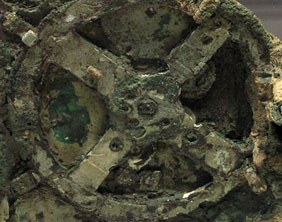
Antikythera Mechanism Research Project
More news stories and websites about The Antikythera mechanism
“Antikythera Mechanism – World’s earliest existing analogue computer”
HotnHit News (India)
“Decoding an Ancient Computer: Greek Technology Tracked the Heavens”
Scientific American (USA)
“Watch a video explaining the Antikythera mechanism”
Nature (UK)
“World’s First Computer Rebuilt, Rebooted After 2,000 Years”
Wired Gadget Lab (USA)
“Antikythera: A 2,000-year-old Greek computer comes back to life”
The Guardian Science Blog (UK)
Google image search results for The Antikythera mechanism
Google (USA)
|
“Decoding the Heavens:
Solving the Mystery of the World’s First Computer”
by
Jo Marchant
William Heinemann Ltd
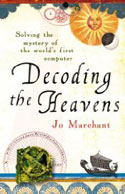
Get This Book From:
Amazon.com
Amazon.co.uk
Abe Books
Barnes & Noble
“For more than a century this ‘Antikythera mechanism’ puzzled academics, but now, more than 2000 years after the device was lost at sea, scientists have pieced together its intricate workings.”
“Ancient Greek Computer from Rhodes: Known as the Antikythera Mechanism”
by
V. J. Kean
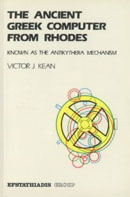
Get This Book From:
Amazon.com
Amazon.co.uk
Abe Books
“This is the true history of an astonishing machine during the time when the island of Rhodes was the centre of both cultural and intellectual activity within the Roman Empire.
Made on the island of Rhodes around 71BC, the computer was lost beneath the waves for almost 2000 years.”
“Gears from the Greeks: The Antikythera Mechanism, a Calendar Computer from Ca 80 B.C.”
by
Derek de Solla Price
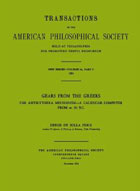
Get This Book From:
Amazon.com
Amazon.co.uk
Abe Books
Barnes & Noble
“The first great discovery in underwater archaeology yielded not only a fine collection of art treasures but also the most enigmatic, most complicated piece of scientific machinery known from antiquity.”
“Earth Grids:
The Secret Patterns of Gaia’s Sacred Sites”
by
Hugh Newman
Wooden Books
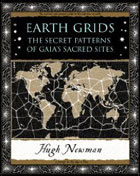
Get This Book From:
Amazon.com
Amazon.co.uk
Abe Books
“Loot: The Battle over the Stolen Treasures
of the Ancient World”
by
Sharon Waxman
Times Books
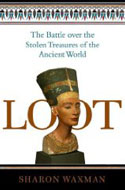
Get This Book From:
Amazon.com
Amazon.co.uk
Abe Books
Barnes & Noble
“The Man Who Invented History: Travels with Herodotus”
by
Justin Marozzi
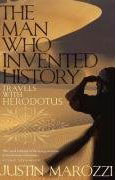
Get This Book From:
Amazon.com
Amazon.co.uk
Abe Books
Barnes & Noble
“Unholy Business: A True Tale of Faith, Greed,
and Forgery in the Holy Land”
by
Nina Burleigh

Get This Book From:
Amazon.com
Amazon.co.uk
Abe Books
Barnes & Noble
“Unearthing Ancient America: The Lost Sagas of Conquerors, Castaways, and Scoundrels”
by
Frank Joseph
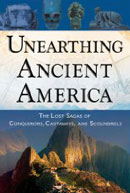
Get This Book From:
Amazon.com
Amazon.co.uk
Abe Books
Barnes & Noble
“The Bluestone Enigma:
Stonehenge, Preseli
and the Ice Age”
by
Brian John
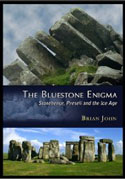
Get This Book From:
Amazon.com
Amazon.co.uk
Abe Books
“The Works of Archimedes”
by
Archimedes
(Author)
&
Sir Thomas Heath
(Translator)
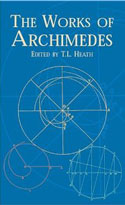
Get This Book From:
Amazon.com
Amazon.co.uk
Abe Books
Barnes & Noble
“The complete works of antiquity’s great geometer appear here in a highly accessible English translation by a distinguished scholar.
Remarkable for his range of thought and his mastery of treatment, Archimedes addressed such topics as the famous problems of the ratio of the areas of a cylinder and an inscribed sphere; the measurement of a circle; the properties of conoids, spheroids, and spirals; and the quadrature of the parabola.
This edition offers an informative introduction with many valuable insights into the ancient mathematician’s life and thought as well as the views of his contemporaries. Modern mathematicians, physicists, science historians, and logicians will find this volume a source of timeless fascination. Unabridged reprint of the classic 1897 edition, with supplement of 1912.”
“Circumference: Eratosthenes and the Ancient Quest to Measure the Globe”
by
Nicholas Nicastro
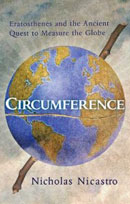
Get This Book From:
Amazon.com
Amazon.co.uk
Abe Books
Barnes & Noble
“Forget the myth of Columbus’ daring in imagining a round earth. Nicastro not only traces the conception of a spherical world back more than a millennium before the seafarer set sail but also recounts in fascinating detail how the ancient Greek geometer Eratosthenes measured that sphere with astonishing accuracy.
Though it would be thousands of years before his feat received appropriate recognition, Eratosthenes conducted his revolutionary science with nothing more complex than a sundial and a compass.
With reader-friendly clarity, Nicastro explains the surprisingly simple calculations behind the earth measurement. But readers learn about much more than geodesy: Nicastro delivers the deeply human story of a multitalented genius whose tenure as the head of Alexandria’s famed library occasioned remarkable achievements in literature, history, linguistics, and philosophy despite the political turmoil that periodically rocked the Ptolemaic world.”
“Decoding the Heavens:
Solving the Mystery of the World’s First Computer”
by
Jo Marchant
William Heinemann Ltd

Get This Book From:
Amazon.com
Amazon.co.uk
Abe Books
Barnes & Noble
“In 1900 a group of sponge divers blown off course in the Mediterranean discovered an Ancient Greek shipwreck dating from around 70 BC. Lying unnoticed for months amongst their hard-won haul was what appeared to be a formless lump of corroded rock, which turned out to be the most stunning scientific artefact we have from antiquity.
For more than a century this ‘Antikythera mechanism’ puzzled academics, but now, more than 2000 years after the device was lost at sea, scientists have pieced together its intricate workings.
Unmatched in complexity for 1000 years, it was able to predict eclipses and track the paths of the Sun and the Moon through the zodiac, and probably even showed ancient astronomers the movements of the five known planets.
In Decoding the Heavens, Jo Marchant tells for the first time the story of the 100-year quest to understand this ancient computer. Along the way she unearths a diverse cast of remarkable characters – ranging from Archimedes to Jacques Cousteau – and explores the deep roots of modern technology not only in ancient Greece but in the Islamic world and medieval Europe too.
At heart an epic adventure story, it is a book that challenges our assumptions about technology transfer over the ages while giving us fresh insights into history itself.”
“Ancient Greek Computer from Rhodes: Known as the Antikythera Mechanism”
by
V. J. Kean

Get This Book From:
Amazon.com
Amazon.co.uk
Abe Books
“This is the true history of an astonishing machine during the time when the island of Rhodes was the centre of both cultural and intellectual activity within the Roman Empire.
Made on the island of Rhodes around 71BC, the computer was lost beneath the waves for almost 2000 years.
Recovered in 1910, the Antikythera machine caused much controversy in scientific circles of the day for the technology incorporated in the device was far ahead of its time.
This miraculous mechanical computer, now on display in the National Archaeological Museum in Athens, has an exceptional history.
The author provides us with something more than the story of its manufacture and use.”
“Gears from the Greeks: The Antikythera Mechanism, a Calendar Computer from Ca 80 B.C.”
by
Derek de Solla Price

Get This Book From:
Amazon.com
Amazon.co.uk
Abe Books
Barnes & Noble
“The first great discovery in underwater archaeology yielded not only a fine collection of art treasures but also the most enigmatic, most complicated piece of scientific machinery known from antiquity.
This artifact is now identified as an astronomical or calendrical calculating device involving a very sophisticated arrangement of more than thirty gear-wheels.
If you want to study the Antikythera Mechanism, this is where to start. This is scientific writing at its best: methodical, readable, captivating.”
|




















